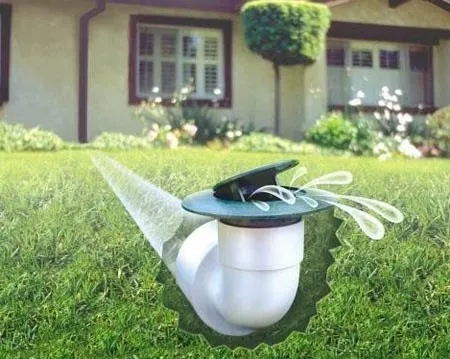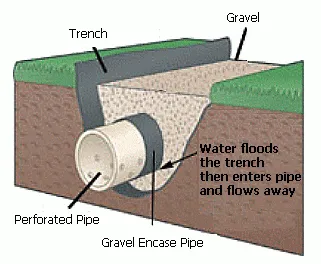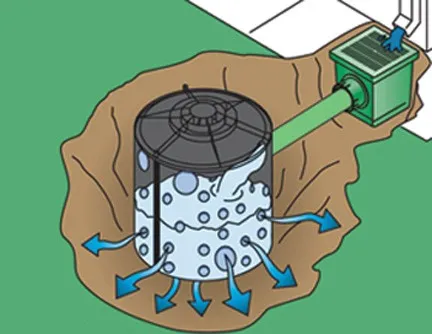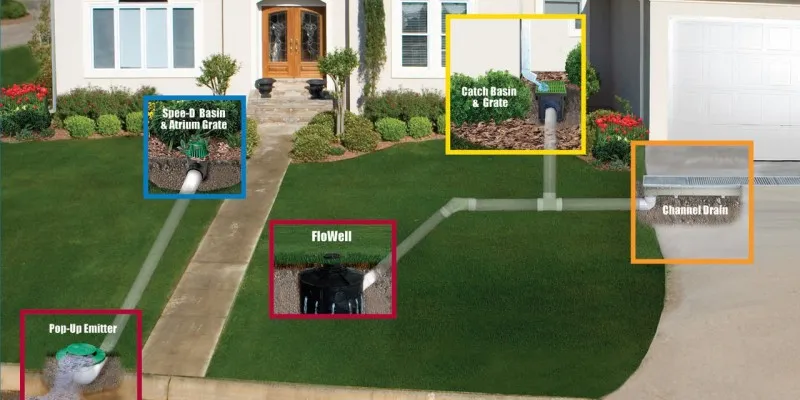Serving clients in Gainesville for over 15 years in this industry you learn to get a really good grasp on our annual weather patterns. As the dry spell rolled on our irrigation department was in high gear, and now with the return of rainy weather drainage is top concern our clients have.
Two common issues are water run-off from downspouts washing away the soil at the foundation of your home and standing water in the yard. We have tips today on how to handle both of these frustrating situations. Whether you hire TMLC or someone else for the installation, or choose to go the DIY route, these tips can help make sure the project is handled correctly to protect your home and solve the problem efficiently.
When you boil it down drainage issues are about relocation of water. It's gathering somewhere that is causing concerns. The first step in planning out a drainage solution is to identify where the water is coming from, and where you want that water moved to. When it comes to downspouts, this usually means making sure water from your roof and gutters don't become a problem for your home's foundation and landscape.
Three solutions that we regularly use in our drainage installations are the pop-up gutter drain, the french drain, and the dry well.
1. Pop-up Gutter Drains
The gutters that encircle your home’s roofline are great for collecting runoff water and preventing it from seeping into the ground next to your home’s foundation. But they won’t do you any good if the water is not successfully directed out of your downspouts and away from your home. Splash blocks may work for small amounts of water, but they won’t be able to handle a major downpour because the excess water just runs back to the foundation. Downspout extensions wcan also work with small amounts of water, but they can be unsightly and aren’t always practical. Enter, the pop up gutter drain. A pipe is attached to the downspout and the water is taken underground and out away from the home into the lawn, where it pops up out of a small green emitter to water the landscape and far enough away from the house not to worry about it affecting the home's foundation.

2. The French Drain
The most reliable way to eliminate undesirable, free-standing water is to install French drains with slotted pipes, filter fabric, and gravel. The old way of installing French drains was to do it without the gravel and the fabric. Without the gravel and the fabric, however, the drain can clog up with sand and soil over time.The best practice for installing French drains is to use perforated drainage pipes, which allow water to enter or exit through small openings along the pipe. The drain pipe and gravel create a void in the ground where the water can go and travel away from the area where it would puddle up and cause concern.

3. The Dry Well
A dry well is an underground structure that disposes of stormwater runoff by dissipating it into the ground, where it merges with the local groundwater. Typically, the ones we use are cylinder shaped which act very similar to a french drain, except instead of the void being long and narrow, it's larger and disperses the water in one area of the lawn.

The basic goal of drainage is to protect your home and landscaping by moving the water from it's problem area and move it away from the home. This is a fundamental part of having an effective landscape and protecting your most valuable investment - your home, Whether you're a Do-It-Yourselfer, or you plan on hiring a professional Gainesville Drainage Installer, we urge you to put it at the top of your list as tropical storm/hurricane season is upon us and that's the most important time to have a functioning drainage system. If you think you have drainage concerns with the little summer rains we've been experiencing, you do not want to see what a tropical storm can do.
If drainage is a concern in your lawn, please fill out the form above or contact our office at 352-378-5296 for a free Gainesville drainage solution consultation.
Related Content: Quick Tips to Prepare your Gainesville yard for summer storms


